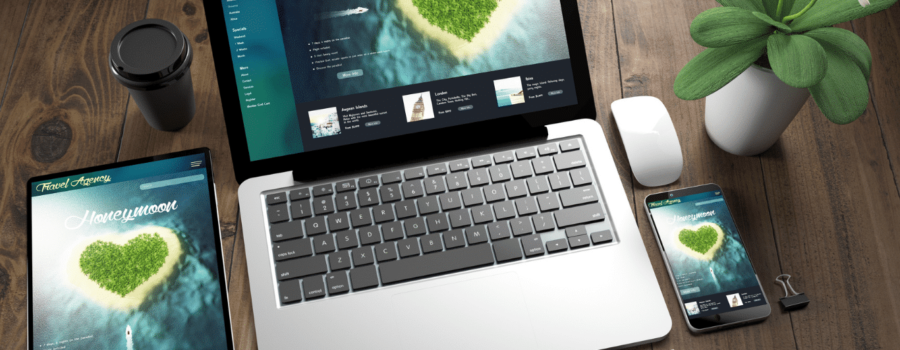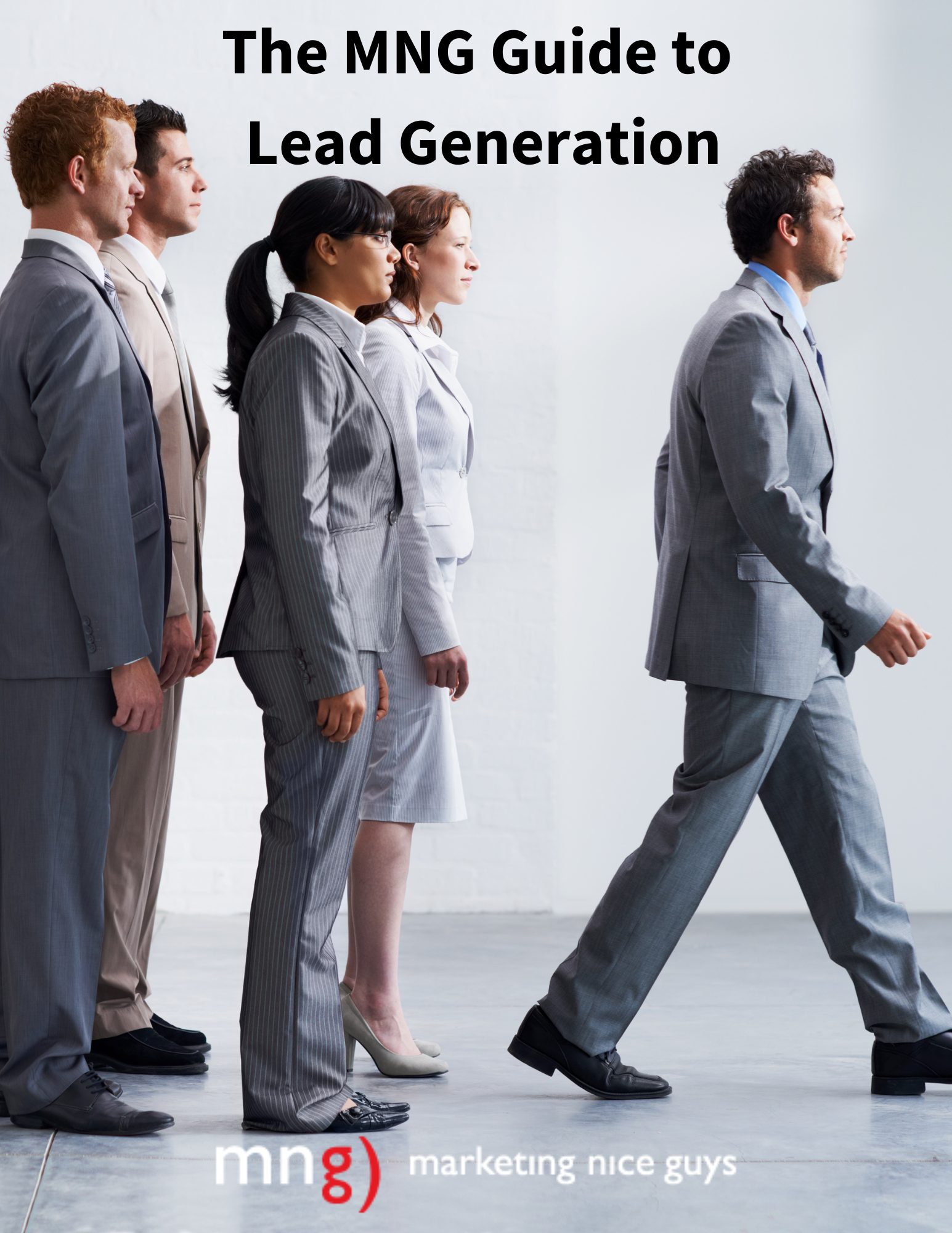Landing pages are basically the pages that visitors first come to when they visit your website, especially those who come from, say, search, social, or email. (While a blog might technically qualify as this, we’re speaking more about pages where the primary goal is to route you somewhere else, not the end content itself.) For example, your most basic landing page – the home page – should help people get quickly to other content and areas of the site that interest them. Other landing pages may be topical in nature (such as category pages) with a mix of content and products / services to promote. Finally, some are the end payoff for those coming in specifically from an ad or a particular call to action – leading to an acquisition or conversion of some kind. For the purposes of this particular blog, we’ll focus on this latter aspect – those pages that are developed in concert with advertising.
Why Pay Attention to the Landing Pages
When thinking about advertising, we often see small businesses focus on the ad itself but then when it comes to the “payoff” – the landing page experience that’s responsible for getting individuals to actually convert – they sometimes take it for granted. In other words, they apply a kind of a “oh-just-send-them-here” type of attitude, perhaps using any related, existing website page rather than designing specifically for a campaign. But that may not be the best approach. After all, advertising is really two parts – 1. Getting individuals to your page and; 2. Getting them to convert. Neither of which can be all that easy. In most cases, we would certainly recommend building out a specific landing page for any ad campaign – one that matches the promise of the ad copy. If you don’t do it this way, what often happens is that your ad does a great job getting people to the page, but individuals don’t convert because it doesn’t meet the visitors’ expectations.
So, what’s included in this type of page?
Like any other aspect of your website, the design of a landing page user experience is not something set in stone. But there are particular elements that we believe can help you drive more engagement and conversions in particular. Here are six elements to consider as you develop the experience.
No. 1: Specify One Goal (And Make Sure It’s Prominent)
As a small business, you may have a lot you want to promote. And it can be tempting to take “the-kitchen-sink” approach to promoting different things on your page. But the result can be an experience where the visitor can’t decide what to do and either navigates elsewhere or leaves the site completely. Identifying that single goal upfront and reinforcing that throughout the page will keep your content on the page focused toward that end. That goal can be a content download, filling in a form, contacting a salesperson or any other form of conversion.
For this reason, many UX designers, will often leave off other common elements of a landing page such as navigation or the footer so the visitor can hone in on that singular focus.[1]
No. 2: Consider the Visual Weight & Use ‘High-Quality’ Visuals
One of the main design aspects of any good page is the visual weight of its objects. What is that? Visual weight basically refers to items that draw the eye on a page. Sites are able to do this in one of 3 ways: 1. Surrounding a focus item with whitespace; 2. Enlarging the size of an item in comparison to other items; 3. Color or other ways to make something stand out. Clearly, when designing any page, you want to make the following focal points carry lots of visual weight, in particular:
-
- Submission / Download or Contact Form
- Call-to-action button(s)
- Headline (which should indicate what you want the user to do)
- Any visuals
For the latter, using high-quality visuals such as photos or video will be foundational to any good page. But what does “high-quality” mean? First, it’s a photo or image that draws the eye. But the image also has to communicate on its own what the page is about. Oftentimes, we see designers can fall in love with a particular visual design or concept regardless of the main goal defined. The two should definitely work together. Also, any visual should also be on brand (color-wise and topic-wise).
The other aspect of design that contributes to the visual weight involves the concept of “air.” Too much information crowded into one viewing window can cause an overwhelming user experience. A great landing page will have no more than 4 to 5 options in any given viewing area (on a desktop) and 1-to-2 options maximum on mobile.
Finally, use color sparingly. We’ve talked about the importance of color in previous posts, and in this case, we recommend that small businesses use a different color for the call-to-action buttons to make them stand out more from the overall page design. Doing so will help you draw your visitors’ eyes to one of the key elements of conversion.
No. 3: Less Is More When It Comes to Text But Answer Audience Questions
Ad landing pages aren’t meant to be blogs or pages that are designed for SEO purposes (though they can double as both if designed right). Either way, it’s good to limit the text to only what’s necessary to help support the main goal you’ve defined. Too much text can become overwhelming. What your visitors are doing on any page is looking for information relevant to them and the reasons they came from the ad to start with.
Which leads to a second point. While your ad landing page may not be long, it should make sure to answer audience questions. Especially if you’re trying to get them to take the next step (provide their name/contact information.) The more you can answer those common questions (definitional, pricing, challenges, how you compare with competitors, etc.) the better you will convert someone.
No 4. Add a Section That Includes ‘Social Proof’
What is social proof? It’s really just a fancy way of saying you have evidence that individuals trust you as a company, or your products and services. Social proof can take the form of different types of content – testimonials, video case studies, quotes from customers in social media, examples of current company clients, and even images of individuals demonstrating the use of your products or services.
The reason to include this on the page is that it provides context and evidence that you’re essentially trustworthy. A few tips as you consider social proof for your landing page:
-
- Include a diverse cross-section of individuals. Even if your product/service is only for a certain demographic, make sure it includes different-looking individuals within those groups – of races, sexes, ages or whoever the intended audience is.
- Get testimonials with photos if you can. The reason is that your website visitors identify with “faces” and inevitably you can communicate the human element of your product or service more effectively.
- Make sure any case study, testimonial or visual image is compelling. Obviously, a best practice here is to choose examples that demonstrate your “authority” or “mastery” of a particular topic or area.
- Avoid additional links to other pages. For the purposes of the landing page, avoid taking people to a separate page if at all possible. Again, the focus of any next click should be on your core, intended goal.
No. 5: Build In an Enticing Call to Action
We recently have seen a few landing pages that had simply used an out-of-the-box “Submit” button or “Send.” The language you use certainly matters here, especially if you can create the incentive to click. Need some examples? Here are a few different options, depending on what your conversion action is:
-
- I Want My [Free Copy]
- Sign Up
- Join Free
- Download for Free
- Give [___] a Try!
- Get Your Free Copy!
- Send Me the Guide!
- Claim Your Free Trial
- Learn More
- Click Here to Get Started
- Get Started Today
- Dive In
- Yes, Give Me My Free Copy!
- Take Me There
- Subscribe Now
- Get It Now! Limited Time Only.
- Grab the Template
One tip: If something is only available for a limited time, make sure to mention either in the call to action to create a sense of urgency. Similarly, if something is free, it will help to reiterate that on the call-to-action button.
No. 6: Include Your Contact Information, Address, or Other Contextual Information
Depending on the type of business you may want to include additional information on (or near) the form itself such as your office locations, contact information (including phone number), or even contextual information. For example, some businesses might offer a free consultation or a free test of services upfront. In which case, it’s always helpful to explain more about how that consultation or free service will go. This can go a long way toward reassuring a user that it’s safe to submit their information.
Conclusion
We hope the tips provided above have been helpful as consider building out a better ad landing page. At Marketing Nice Guys, our goal is to help you excel at digital marketing. Feel free to contact us for a free consultation for any services involving paid media ad campaigns or other initiatives. We’re here to help you.
[1] To be clear, we’re not advocating going that far, as it’s OK in our book if you attract visitors who use your navigation or the footer to explore other aspects of your website. (Plus, many landing pages can have dual uses for SEO and paid/email campaigns so you’ll want to keep as many options open for your users as possible to discover your pages.) The main point here is that the body of the page should have that central focus front and center.






